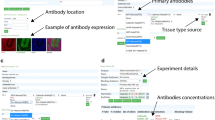Abstract
This paper demonstrates a pure web-based solution enabling the presentation of scanned pathologic microscopic images on the web. For each slide, an entire specimen is scanned, and a high-resolution digital image (in the order of giga-pixels) is reconstructed. These huge images are then tiled into many 256 × 256-pixel blocks with different resolutions, and information about the blocks of each scanned slide is included in an extensible markup language metafile. Based on the data, a virtual microscopy system is created for viewing the scanned pathologic slides on web. The functionalities (changing viewing resolution, location adjustment, and multimedia annotation presentation) of our virtual slide viewing system are accomplished using pure hypertext markup language (HTML) and JavaScript. We show that there is no need to add plug-in components to browsers in order to handle virtual slides on the web. In a heterogeneous healthcare environment, methods using pure HTML and JavaScript to deal with pathologic content are more appropriate than using proprietary technologies supported only by specific browsers.








Similar content being viewed by others
Abbreviations
- DICOM:
-
digital imaging and communication in medicine
- IHE:
-
integrating healthcare enterprise
- VS:
-
virtual slides
- VSAS:
-
virtual slide acquisition systems
References
Glatz-Krieger K, Spornitz U, Spatz A, Mihatsch M, Glatz D: Factors to keep in mind when introducing virtual microscopy. Virchows Arch 448:248–255, 2006
Kumar RK, Velan GM, Korell SO, Kandara M, Dee FR, Wakefield D: Virtual microscopy for learning and assessment in pathology. J Pathol 204:613–618, 2004
Kumar RK, Freeman B, Velan GM, De Permentier PJ: Integrating histology and histopathology teaching in practical classes using virtual slides. Anat Rec B New Anat 289B:128–133, 2006
XML-based virtual slide box for teaching histology and pathology, http://cclcm.ccf.org/vm; accessed 31 August 2007.
Harris T, Leaven T, Heidger P, Kreiter C, Duncan J, Dick F: Comparison of a virtual microscope laboratory to a regular microscope laboratory for teaching histology. Anat Rec B New Anat 265:10–14, 2007
Helin H, Lundin M, Lundin J, Martikainen P, Tammela T, Helin H, van der Kwast T, Isola J: Web-based virtual microscopy in teaching and standardizing Gleason grading. Hum Pathol 36:381–386, 2005
MarchHevsky AM, Relan A, Baillie S: Self-instructional “virtual pathology” laboratories using web-based technology enhance medical school teaching of pathology. Hum Pathol 34:423–429, 2003
Dee FR, Lehman JM, Consoer D, Leaven T, Cohen MB: Implementation of virtual microscope slides in the annual pathobiology of cancer workshop laboratory. Hum Pathol 34:430–436, 2003
Massone C, Peter Soyer H, Lozzi GP, Di Stefani A, Leinweber B, Gabler G, Asgari M, Boldrini R, Bugatti L, Canzonieri V: Feasibility and diagnostic agreement in teledermatopathology using a virtual slide system. Hum Pathol 38:546–554, 2007
Ho J, Parwani AV, Jukic DM, Yagi Y, Anthony L, Gilbertson JR: Use of whole slide imaging in surgical pathology quality assurance: design and pilot validation studies. Hum Pathol 37:322–331, 2006
Clarke GM, Zubovits JT, Katic M, Peressotti C, Yaffe MJ: Spatial resolution requirements for acquisition of the virtual screening slide for digital whole-specimen breast histopathology. Hum Pathol 38:1764–1771, 2007
Glatz-Krieger K, Glatz D, Mihatsch MJ: Virtual slides: high-quality demand, physical limitations, and affordability. Hum Pathol 34:968–974, 2003
The advantages of line scanning for rapid entire slide capture. http://www.aperio.com/productsservices/prod-technology.asp; accessed 31 August 2007.
Sun C, Beare R, Hilsenstein V, Jackway P: Mosaicing of microscope images with global geometric and radiometric corrections. J Microsc 224:158–165, 2006
Prototype JavaScript framework. http://www.prototypejs.org; accessed 31 August 2007.
Author information
Authors and Affiliations
Corresponding author
Rights and permissions
About this article
Cite this article
Lien, CY., Teng, HC., Chen, DJ. et al. A Web-Based Solution for Viewing Large-Sized Microscopic Images. J Digit Imaging 22, 275–285 (2009). https://doi.org/10.1007/s10278-008-9136-x
Received:
Revised:
Accepted:
Published:
Issue Date:
DOI: https://doi.org/10.1007/s10278-008-9136-x




